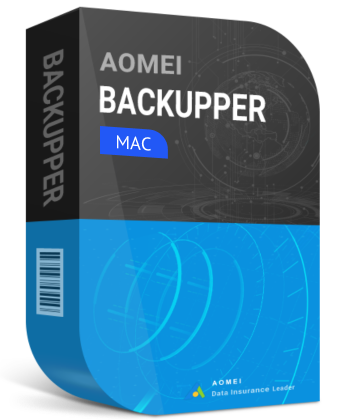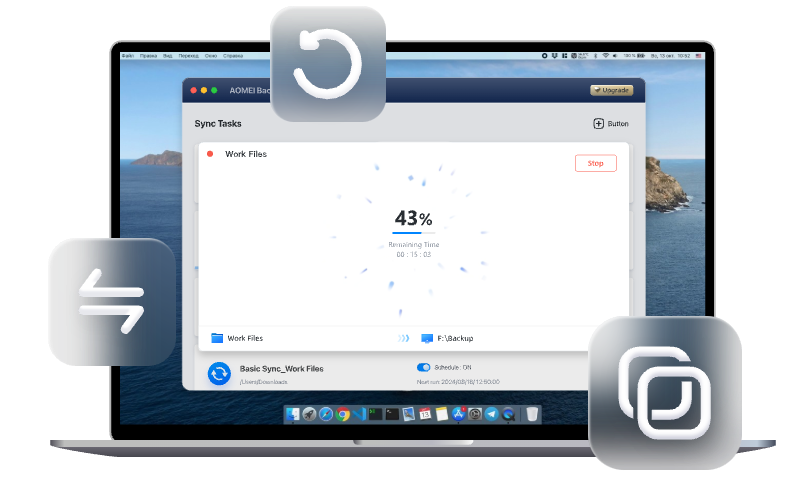How to Move Files from Mac to External Hard Drive: 3 Free Ways
This post covers 3 simple and free methods to move files from Mac to external hard drive. And the first solution, relying on professional Mac sync software, allows you to auto transfer files to external drive on Mac easily.
Can I Transfer Files from Mac to External Hard Drive?
I got a new Mac, and I need to sell my old Mac to get some money back but when I do I’ll lose access to my old files. So I wanna save all the files from my old Mac to an external hard drive so they are accessible later. The question is: how can I move files from Mac to external hard drive? Thanks!!
Sure, you are able to transfer your Mac files to external drive. Macs support various types of external storage devices, including USB drives, external SSDs, and traditional external hard drives. In this guide, we’ll explore three free methods to learn how to transfer Mac files to external hard drive easily and quickly.
Benefits of Moving Mac Files to External Drive
Transferring files from your Mac to an external hard drive offers several benefits:
- Backup and security: Keeping a copy of your files on an external drive ensures that your data is safe in case your Mac experiences issues like hardware failure, accidental deletion, or software corruption.
- Free up space: By moving files to an external drive, you can free up valuable space on your Mac's internal storage, improving performance and allowing for more room for new files and applications.
- Easy portability: An external hard drive allows you to carry your important files with you, making it easy to access them on different devices.
- Better organization: Storing files externally can help you organize your data better, separating work files from personal files or archiving old projects that you don't need immediate access to.
So how to transfer files on Mac to external hard drive? Keep reading, and we will share 3 free ways to accomplish this task. The first one, using a free third-party Mac file sync tool, lets you move files automatically and quickly, and the second and third ones utilize Mac built-in utilities.
Fastest Way to Move Files from Mac to External Hard Drive
To transfer all files from Mac to external hard drive swiftly and securely, the fastest way is to utilize a professional file synchronization software for Mac like AOMEI Backupper Mac. With an intuitive interface, it is easy to navigate and use, even for beginners. And it also comes with various sync features to help you streamline your file sync process.

- Flexible sync methods: Provide you with Basic Sync, Mirror Sync, and Two-Way Sync for diverse sync needs.
- Automatic sync: Embedded scheduling functionality that can help you perform daily, weekly, or monthly synchronizations.
- Various sync destinations: In addition to transferring data to external drives, it also supports Mac folder/file sync to network locations, NAS devices, Mac to Mac file sync, etc.
For how to transfer photos from Mac to flash drive or other external drives using this freeware, you can get it installed on your computer and go on with the guidelines below (PS: It also offers a Standard version for Windows systems and a Server version for Server systems).
Step 1. Connect your USB disk or other external drives to your Mac, and ensure it is recognized and accessible.
Step 2. Open AOMEI Backupper Mac, and click on the New Task button to create a file sync task.
Step 3. Choose a sync method according to your needs:
- Basic Sync: Performs one-way sync from the source location to the destination.
- Mirror Sync: Always keep files in the destination location exactly the same as in the source.
- Two-Way Sync: Sync changed files between source and destination to the other side mutually.
Step 4. Click Select Sync Source to choose Local Path, and then select the Mac files you wish to move to external drive. Then, click Select Sync Destination > Local Path to specify your connected USB drive as the sync destination.
Step 5. Set up automatic sync if needed. Then, hit Sync to copy files from Mac to external hard drive easily.
Two Traditional Ways to Transfer Mac Files to External Hard Drive
If you prefer not to use third-party software, there are two traditional methods for transferring files from your Mac to an external hard drive: using Mac Finder and relying on Terminal commands.
Method 1. Use Mac Finder
Using Finder is a simple and intuitive way to move files from your Mac to an external hard drive. Here are steps for how to copy files from Mac to USB hard drive:
Step 1. Plug your external hard drive into your Mac's USB port.
Step 2. Click the Finder icon in the Dock to open a Finder window. Then, navigate to the files or folders you want to move.
Step 3. Use Command + C to copy items to the clipboard, open the external drive, and hold down Option + Command + V to paste them.
- Tip:
- If you want to know how to move files from Mac to external hard drive not copying Finder, you can just use the drag-and-drop play while holding the Command key.
Method 2. Rely on Terminal Command
For users comfortable with the command line, the Terminal also provides a powerful way to transfer files.
Step 1. Connect your external drive, and launch Terminal from the Applications > Utilities folder.
Step 2. Type the cp command followed by the source file path and the destination path. For example:
- cp /path/to/source /path/to/destination
- Tips:
- Please replace /path/to/source with the path of the files you want to transfer and /path/to/destination with the path to your external hard drive.
- To move files from Mac to external hard drives without copying here, you should use the mv /path/to/source /path/to/destination command instead.
FAQs about Moving Files External Drive on Mac
#1. Why can't I move files from Mac to external hard drive?
There are several reasons why you might be Unable to copy files from Mac to an external hard drive:
- File permissions: You may not have the necessary permissions to modify or move the files.
- Drive format: The external drive might not be formatted in a compatible format (e.g., NTFS, which is read-only on Mac).
- Connection issues: There could be issues with the connection between your Mac and the external hard drive.
#2. Why is my Mac not allowing external hard drive?
If your Mac is not recognizing your external hard drive, try the following troubleshooting steps:
- Check the connection: Ensure the USB cable is securely connected and try a different port.
- Format the drive: If the drive is not formatted correctly, reformat it using Disk Utility.
- Update software: Ensure your macOS and any relevant drivers are up-to-date.
- Test on another device: Try connecting the external hard drive to another computer to rule out issues with the drive itself.
#3. How do I copy my entire Mac to an external hard drive?
To copy your entire Mac to an external hard drive, you can use Time Machine, Apple’s built-in backup feature:
- Plug in your external hard drive and ensure it's recognized by your Mac.
- Go to System Preferences > Time Machine.
- Click Select Backup Disk and choose your external hard drive from the list.
- Click Back Up Now to initiate the backup process. This tool will create a complete backup of your Mac’s system, including all files, applications, and settings.
Conclusion
Moving files from your Mac to an external hard drive is an essential task for managing your data and ensuring your files are securely backed up.
Whether you choose to use specialized software like AOMEI Backupper Mac or rely on the Mac Finder or Terminal commands, the task can be done easily. But for continuous file synchronizations, AOMEI Backupper Mac is a better and time-saving option.

